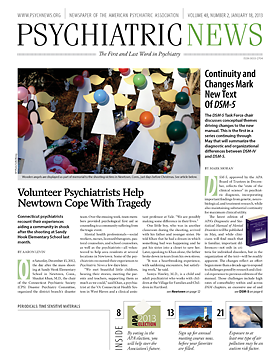Despite enormous advances in autism research and the development of treatment and services, challenges persist especially around understanding recent dramatic increases in prevalence.
So said government officials and patient advocates at a hearing last month before the House of Representatives Committee on Oversight and Government Reform.
Alan Guttmacher, M.D., director of the National Institute on Child Health and Human Development, outlined the goals, objectives, and achievements of the federal government’s Interagency Autism Coordinating Committee. This committee was created by the Children’s Health Act of 2000, reestablished by the Combating Autism Act of 2006 and reauthorized by the Combating Autism Reauthorization Act of 2011.
“On the research front, we have seen some remarkable progress in understanding the prevalence of ASD [autism spectrum disorders], developing screening methods and interventions with potential to be used to identify and treat ASD in very young children, and understanding the risk factors that may contribute to the development of ASD,” Guttmacher told the committee. “This research is rapidly moving toward translation into practical tools that can be used in the clinic and community settings to change outcomes for people with ASD. Federal agencies have also coordinated efforts to enhance critical services programs; identify best practices to support the education, health, and employment needs of people on the spectrum; and develop new mechanisms and strategies to enable broad access to health care, services, and supports.”
He was joined in the hearing by Coleen Boyle, Ph.D., director of the National Center for Birth Defects and Developmental Disabilities at the Centers for Disease Control and Prevention (CDC).
“In March 2012, the CDC released updated estimates of prevalence . . . indicating that 1 in 88 children had been identified with an ASD,” she said. “This number compares with an identified prevalence of 1 in 110 in 2009, estimated using data from surveillance year 2006. In 2007, we reported a rate of 1 in 150 children, based on data from 2002.
“While there is no simple explanation for the increase, we know that it is due in part to improved methods for identification and diagnosis and to increased public awareness partly resulting from the expansion of behavioral health services in local communities. However, we do not know exactly how much of the increase is due to these factors. To better understand the causes of the increase, we need to continue tracking ASD and continue working with our colleagues at NIH and in the broader scientific community to improve identification of risks and protective factors associated with autism.”
Boyle said ASD remains nearly five times more common among boys than girls. “We also know that the largest increases in identified prevalence over time were among Hispanic and African-American children, and children without intellectual disability,” she said. “Some of the most recent increases can be attributed to greater awareness of ASD and improved identification of children with ASD within communities. However, this explanation can account for only part of the increase over time, since more children were identified with ASD among all racial and ethnic groups and at all levels of intellectual ability.”
Also speaking at the hearing were representatives from the Autism Society, Autism Speaks, the Autistic Self-Advocacy Network, SafeMinds, the Global and Regional Asperger Syndrome Partnership, and the Asperger Initiative at Mercyhurst University. ■
